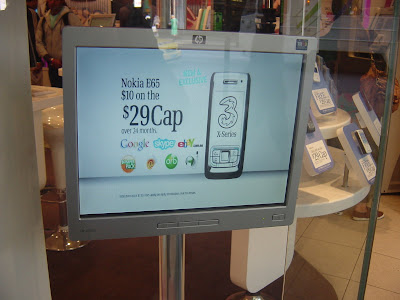There is an excellent display on the Bunjilaka people who occupied the land that Melbourne sits on prior to the arrival of European settlers in the 1800's. There are also interesting specimens from Charles Darwin's explorations of the South Pacific and Australia, and a great exhibit on the ongoing evolution of our understanding of DNA as well as the human body.
One rather modest exhibit in the museum caught my eye however - a small room on the main floor of the museum which houses the original CSIRAC computer. (No longer functional, but they did add some flashing lights for good effect...) Having grown up during the emergence of the "Home Computer", when computers were something that were plugged into your TV (seems like we're coming back to that these days...), seeing this remnant of the early days of computing was a very eye opening experience.
CSIRAC Computer's Disk Drive
The Commodore 64 - Behind Glass
Seeing the Commodore 64 of my childhood behind a glass display case brought into focus how much has passed in the computing game. Memories of wrestling with tape drives, copying computer programs out of the back of magazines, BBS's, and finally the advent of the disk drive and the modem...
The third experience, which put all this computing history into perspective, was a quick walk past the window of a mobile "phone" shop. Where for a cool $29 per month, you can get a mobile computing platform which can connect to the broad corners of the Internet, reducing the cost of international calls to zero and allowing the storage and access of countless amounts of data and information.
Get Google, Skype and eBay on your mobile for $29/mo
I guess this is the natural conclusion of Moore's Law, and a few other major innovations over the past, but its amazing how much of it you walk past on a day-to-day basis without even taking a second glance. John Culkin said, "we shape our tools and thereafter they shape us". Its very difficult to see how the amazing leaps in power, scope and reach of computing haven't had a massive effect on our society to date, and won't continue to do so far into the future.
Thankfully all this technology can also help us remember where we came from...

